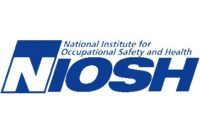Oil and gas extraction workers exposed to respirable crystalline silica
Research examines work crew exposures to crystalline silica during hydraulic fracturing
 A recent report published in the Journal of Occupational and Environmental Hygiene (JOEH) found respirable crystalline silica, a human lung carcinogen, to be an occupational exposure hazard for oil and gas extraction workers. The study is the first systematic investigation of worker exposure to crystalline silica during directional drilling and hydraulic fracturing, a process used to stimulate well production in the oil and gas industry.
A recent report published in the Journal of Occupational and Environmental Hygiene (JOEH) found respirable crystalline silica, a human lung carcinogen, to be an occupational exposure hazard for oil and gas extraction workers. The study is the first systematic investigation of worker exposure to crystalline silica during directional drilling and hydraulic fracturing, a process used to stimulate well production in the oil and gas industry.
Field researchers from the National Institute for Occupational Safety and Health (NIOSH) Western States Office (WSO) and the Division of Applied Research and Technology (DART) collected 111 personal breathing zone samples at 11 sites in five states over a 15-month period to evaluate exposures to respirable crystalline silica during hydraulic fracturing. Respirable silica is the portion of crystalline silica that is small enough to enter the gas-exchange regions of the lungs if inhaled and includes particles with aerodynamic diameters less than approximately 10 micrometers (μm).
“Certain work in this industry requires employees to be in areas where respirable silica levels may exceed defined occupational exposure limits like the OSHA Permissible Exposure Limit or the NIOSH Recommended Exposure Limits (RELs),” said Michael Breitenstein, with the NIOSH DART in Cincinnati, Ohio. “However, our study found that in some cases full shift personal breathing zone exposures exceeded 10 times the REL.”
Occupational exposures to respirable crystalline silica are associated with the development of silicosis, lung cancer, pulmonary tuberculosis, and other respiratory diseases. These exposures may also be related to the development of autoimmune disorders, chronic renal disease, and other adverse health effects.
“Although half-mask, air-purifying respirators are most commonly used at hydraulic fracturing sites, due to the magnitude of the silica concentrations measured, half-masks might not be sufficiently protective,” said Eric J. Esswein of the NIOSH WSO in Denver, Colo. “In some cases, silica concentrations exceeded the maximum use concentration for that type of respirator.”
According to NIOSH, the risks of silica exposures for workers exposed at or above the REL (0.05 mg/m3) may be minimized by substituting less hazardous materials and using engineering controls to limit exposures. In cases when engineering controls are not sufficient to keep exposures below the REL, NIOSH recommends using appropriate respiratory protection, and making medical examinations available to exposed workers.
Click here to view the full study from the Journal of Occupational and Environmental Hygiene (JOEH).
JOEH is published jointly by ACGIH® and AIHA. JOEH enhances the knowledge and practice of occupational and environmental hygiene and safety. It provides a written medium for the communication of ideas, methods, processes, and research in the areas of occupational, industrial, and environmental hygiene; exposure assessment; engineering controls; occupational and environmental epidemiology, medicine, and toxicology; ergonomics; and other related disciplines.
Looking for a reprint of this article?
From high-res PDFs to custom plaques, order your copy today!









